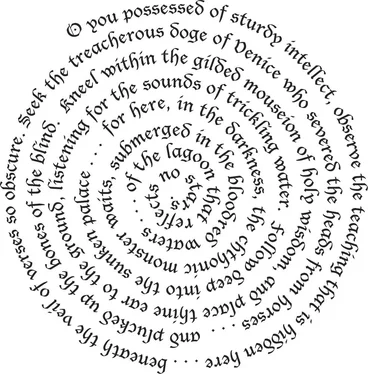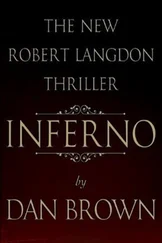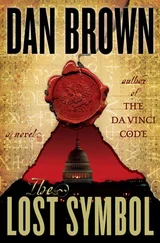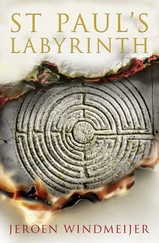Dan Brown - Inferno - A Novel
Здесь есть возможность читать онлайн «Dan Brown - Inferno - A Novel» весь текст электронной книги совершенно бесплатно (целиком полную версию без сокращений). В некоторых случаях можно слушать аудио, скачать через торрент в формате fb2 и присутствует краткое содержание. Год выпуска: 2013, ISBN: 2013, Издательство: Doubleday, Жанр: Старинная литература, на английском языке. Описание произведения, (предисловие) а так же отзывы посетителей доступны на портале библиотеки ЛибКат.
- Название:Inferno: A Novel
- Автор:
- Издательство:Doubleday
- Жанр:
- Год:2013
- ISBN:978-0-385-53786-5
- Рейтинг книги:4 / 5. Голосов: 1
-
Избранное:Добавить в избранное
- Отзывы:
-
Ваша оценка:
- 80
- 1
- 2
- 3
- 4
- 5
Inferno: A Novel: краткое содержание, описание и аннотация
Предлагаем к чтению аннотацию, описание, краткое содержание или предисловие (зависит от того, что написал сам автор книги «Inferno: A Novel»). Если вы не нашли необходимую информацию о книге — напишите в комментариях, мы постараемся отыскать её.
Inferno: A Novel — читать онлайн бесплатно полную книгу (весь текст) целиком
Ниже представлен текст книги, разбитый по страницам. Система сохранения места последней прочитанной страницы, позволяет с удобством читать онлайн бесплатно книгу «Inferno: A Novel», без необходимости каждый раз заново искать на чём Вы остановились. Поставьте закладку, и сможете в любой момент перейти на страницу, на которой закончили чтение.
Интервал:
Закладка:
Langdon and the others were now standing in Hagia Sophia’s narthex—a narrow antechamber that was common in Christian churches and served as an architectural buffer between the divine and the profane.
Spiritual moats , Langdon often called them.
The group crossed toward another set of doors, and Mirsat pulled one open. Beyond it, instead of the sanctuary he had anticipated seeing, Langdon beheld a secondary narthex, slightly larger than the first.
An esonarthex , Langdon realized, having forgotten that Hagia Sophia’s sanctuary enjoyed two levels of protection from the outside world.
As if to prepare the visitor for what lay ahead, the esonarthex was significantly more ornate than the narthex, its walls made of burnished stone that glowed in the light of elegant chandeliers. On the far side of the serene space stood four doors, above which were spectacular mosaics, which Langdon found himself intently admiring.
Mirsat walked to the largest door—a colossal, bronze-plated portal. “The Imperial Doorway,” Mirsat whispered, his voice almost giddy with enthusiasm. “In Byzantine times, this door was reserved for sole use of the emperor. Tourists don’t usually go through it, but this is a special night.”
Mirsat reached for the door, but paused. “Before we enter,” he whispered, “let me ask, is there something in particular you would like to see inside?”
Langdon, Sinskey, and Brüder all glanced at one another.
“Yes,” Langdon said. “There’s so much to see, of course, but if we could, we’d like to begin with the tomb of Enrico Dandolo.”
Mirsat cocked his head as if he had misunderstood. “I’m sorry? You want to see … Dandolo’s tomb?”
“We do.”
Mirsat looked downcast. “But, sir … Dandolo’s tomb is very plain. No symbols at all. Not our finest offering.”
“I realize that,” Langdon said politely. “All the same, we’d be most grateful if you could take us to it.”
Mirsat studied Langdon a long moment, and then his eyes drifted upward to the mosaic directly over the door, which Langdon had just been admiring. The mosaic was a ninth-century image of the Pantocrator Christ—the iconic image of Christ holding the New Testament in his left hand while making a blessing with his right.
Then, as if a light had suddenly dawned for their guide, the corners of Mirsat’s lips curled into a knowing smile, and he began wagging his finger. “Clever man! Very clever!”
Langdon stared. “I’m sorry?”
“Don’t worry, Professor,” Mirsat said in a conspiratorial whisper. “I won’t tell anyone why you’re really here.”
Sinskey and Brüder shot Langdon a puzzled look.
All Langdon could do was shrug as Mirsat heaved open the door and ushered them inside.
CHAPTER 88
The Eighth Wonder of the World, some had called this space, and standing in it now, Langdon was not about to argue with that assessment.
As the group stepped across the threshold into the colossal sanctuary, Langdon was reminded that Hagia Sophia required only an instant to impress upon its visitors the sheer magnitude of its proportions.
So vast was this room that it seemed to dwarf even the great cathedrals of Europe. The staggering force of its enormity was, Langdon knew, partly an illusion, a dramatic side effect of its Byzantine floor plan, with a centralized naos that concentrated all of its interior space in a single square room rather than extending it along the four arms of a cruciform, as was the style adopted in later cathedrals.
This building is seven hundred years older than Notre-Dame , Langdon thought.
After taking a moment to absorb the breadth of the room’s dimensions, Langdon let his eyes climb skyward, more than a hundred and fifty feet overhead, to the sprawling, golden dome that crowned the room. From its central point, forty ribs radiated outward like rays of the sun, extending to a circular arcade of forty arched windows. During daylight hours, the light that streamed through these windows reflected—and re-reflected—off glass shards embedded in the golden tile work, creating the “mystical light” for which Hagia Sophia was most famous.
Langdon had seen the gilded ambience of this room captured accurately in painting only once. John Singer Sargent . Not surprisingly, in creating his famous painting of Hagia Sophia, the American artist had limited his palette only to multiple shades of a single color.
Gold .
The glistening golden cupola was often called “the dome of heaven itself” and was supported by four tremendous arches, which in turn were sustained by a series of semidomes and tympana. These supports were then carried by yet another descending tier of smaller semidomes and arcades, creating the effect of a cascade of architectural forms working their way from heaven toward earth.
Moving from heaven to earth, albeit by a more direct route, long cables descended straight down from the dome and supported a sea of gleaming chandeliers, which seemed to hang so low to the floor that tall visitors risked colliding with them. In reality, this was another illusion created by the sheer magnitude of the space, for the fixtures hung more than twelve feet off the floor.
As with all great shrines, Hagia Sophia’s prodigious size served two purposes. First, it was proof to God of the great lengths to which Man would go to pay tribute to Him. And second, it served as a kind of shock treatment for worshippers—a physical space so imposing that those who entered felt dwarfed, their egos erased, their physical being and cosmic importance shrinking to the size of a mere speck in the face of God … an atom in the hands of the Creator.
Until a man is nothing, God can make nothing out of him . Martin Luther had spoken those words in the sixteenth century, but the concept had been part of the mind-set of builders since the earliest examples of religious architecture.
Langdon glanced over at Brüder and Sinskey, who had been staring upward and who now lowered their eyes to earth.
“Jesus,” Brüder said.
“Yes!” Mirsat said excitedly. “And Allah and Muhammad, too!”
Langdon chuckled as their guide directed Brüder’s gaze to the main altar, where a towering mosaic of Jesus was flanked by two massive disks bearing the Arabic names of Muhammad and Allah in ornate calligraphy.
“This museum,” Mirsat explained, “in an effort to remind visitors of the diverse uses of this sacred space, displays in tandem both the Christian iconography, from the days when Hagia Sophia was a basilica, and the Islamic iconography, from its days as a mosque.” He gave a proud smile. “Despite the friction between the religions in the real world, we think their symbols work quite nicely together. I know you agree, Professor.”
Langdon gave a heartfelt nod, recalling that all of the Christian iconography had been covered in whitewash when the building became a mosque. The restoration of the Christian symbols next to the Muslim symbols had created a mesmerizing effect, particularly because the styles and sensibilities of the two iconographies are polar opposites.
While Christian tradition favored literal images of its gods and saints, Islam focused on calligraphy and geometric patterns to represent the beauty of God’s universe. Islamic tradition held that only God could create life, and therefore man has no place creating images of life—not gods, not people, not even animals.
Langdon recalled once trying to explain this concept to his students: “A Muslim Michelangelo, for example, would never have painted God’s face on the ceiling of the Sistine Chapel; he would have inscribed the name of God. Depicting God’s face would be considered blasphemy.”
Читать дальшеИнтервал:
Закладка:
Похожие книги на «Inferno: A Novel»
Представляем Вашему вниманию похожие книги на «Inferno: A Novel» списком для выбора. Мы отобрали схожую по названию и смыслу литературу в надежде предоставить читателям больше вариантов отыскать новые, интересные, ещё непрочитанные произведения.
Обсуждение, отзывы о книге «Inferno: A Novel» и просто собственные мнения читателей. Оставьте ваши комментарии, напишите, что Вы думаете о произведении, его смысле или главных героях. Укажите что конкретно понравилось, а что нет, и почему Вы так считаете.










